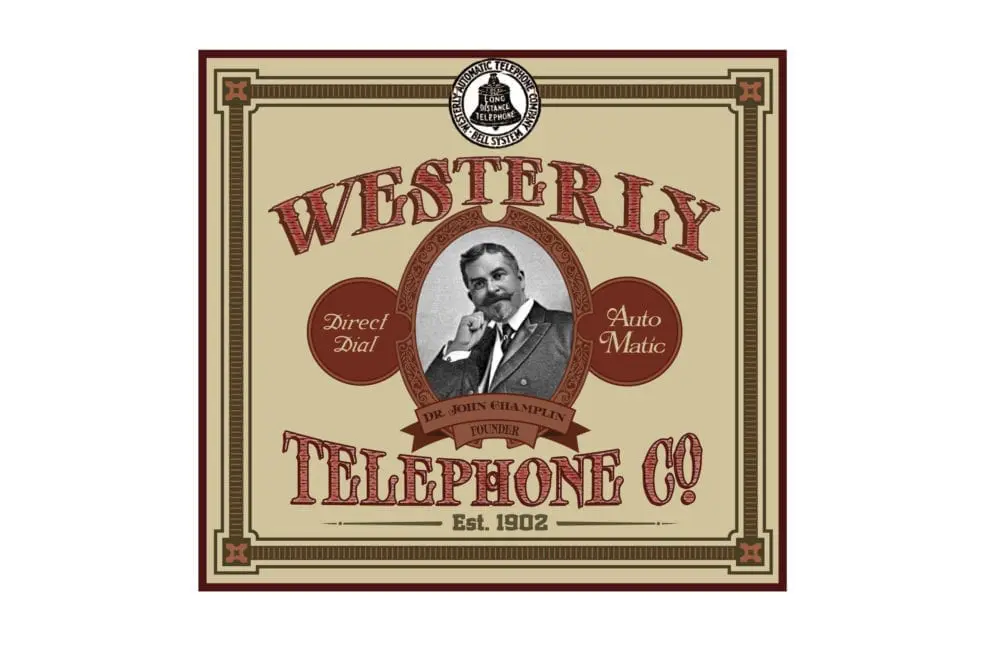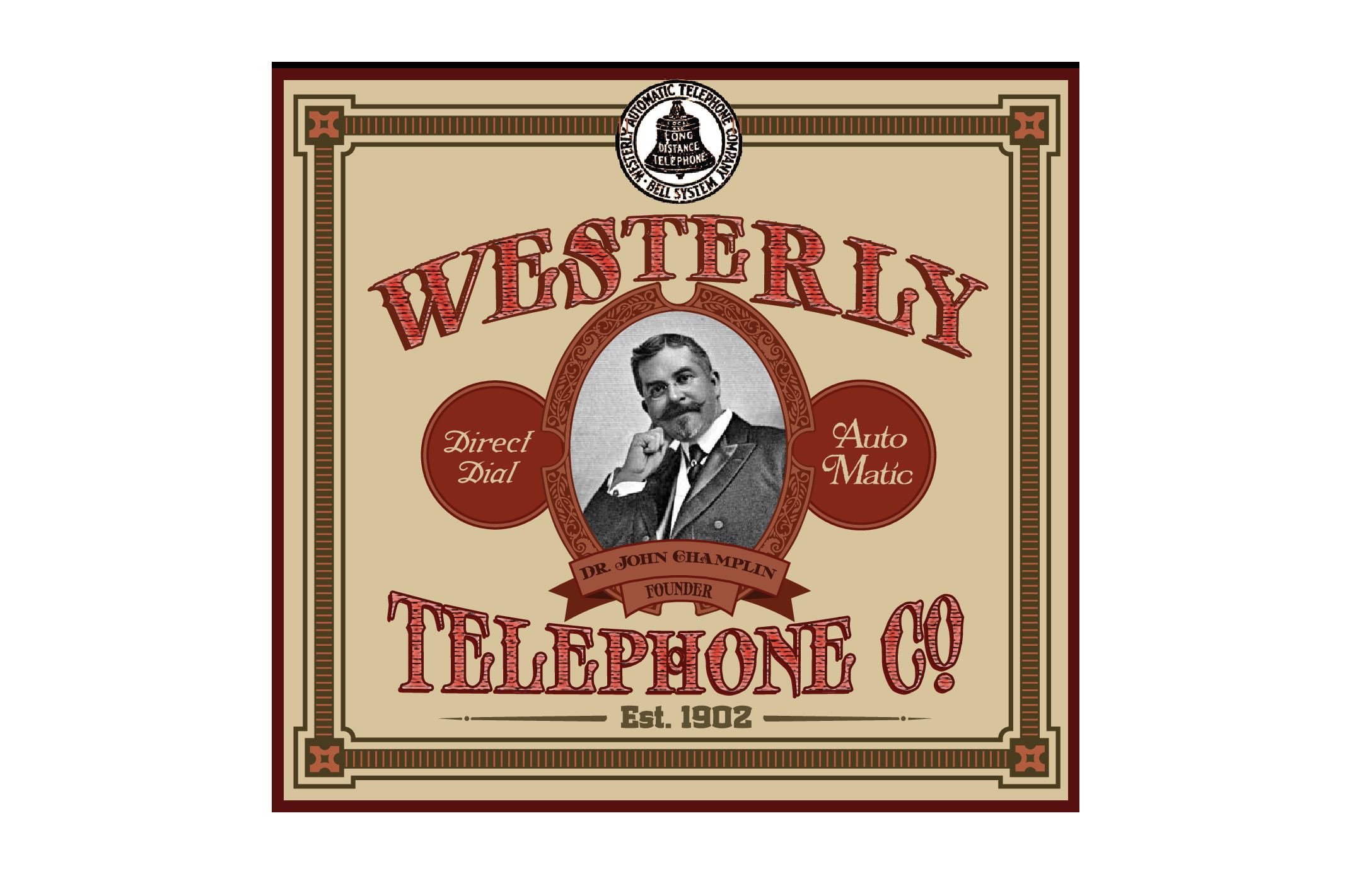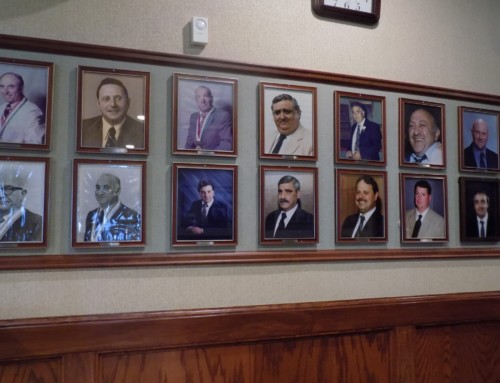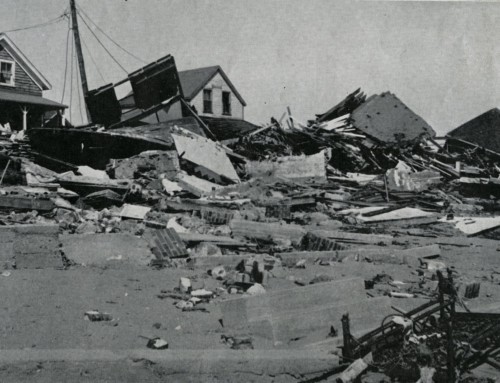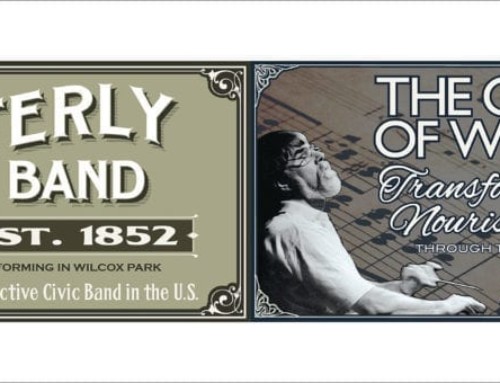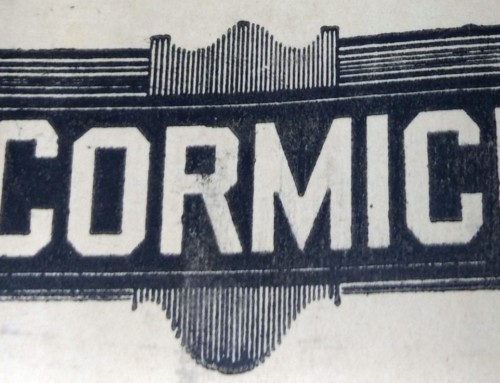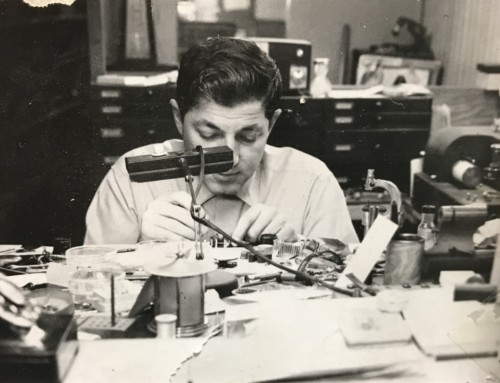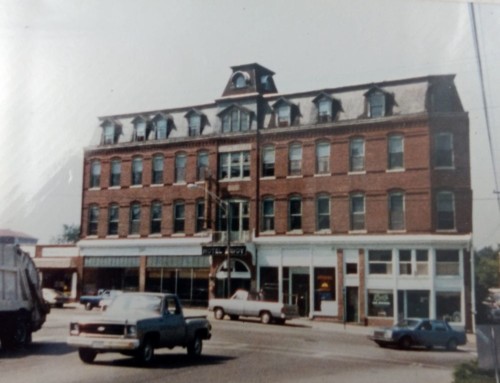The following is part two of Westerly Life’s “Behind the Murals” series exploring the history behind each of the recently created murals throughout downtown Westerly and Pawcatuck. The mural discussed in this article can be found outside 84 Tavern on Canal at 15 Canal Street, directly across from Savoy Bookshop and Café in Westerly.
In a time when telephones are constantly on the cutting edge of technology and a central part of most people’s lives, it is hard to imagine a time when being able to make a private call was considered new and exciting, but such a time did exist. In 1902, a man named Dr. John Champlin saw the potential in new telephone technology and used his financial backing and eye for innovation, to bring Westerly into a new era of communication.
Born in Westerly on October 5, 1863 to Samuel A. and Mary B. (Ross) Champlin,[1] John Champlin was a well-respected man in the community and worked as a physician his whole life.[2] Dr. Champlin lived with his wife, Anna E. (Lyon) Champlin, first at 3 Granite Street, where he also practiced medicine. He later moved to a grand brick house at 9 Granite Street. [3]
By 1902, Dr. Champlin had built a reputation around town as a strong leader. He was greatly respected and admired by his peers and used this influence to gather support around town for his latest idea, which he believed would be the future of communication, the automatic telephone.
The idea of home telephones was not new at this time, as Westerly was served by the Providence Telephone Company, but many around town felt the service left much to be desired. To use the standard system originally developed by Alexander Graham Bell, the caller would first turn a crank on their telephone box to send an electrical impulse to attract the attention of the operator, who would then inquire about the number the caller was seeking. The operator would then connect them to that number, a time-consuming procedure. The offices of the Westerly Automatic Telephone Company were at 40 Main Street, just a short walk from Champlin’s home on Granite Street. [4]
At the start of the Twentieth Century, there were only 39 phones in all of Westerly and many of them belonged to businesses. Seeing an opportunity, Dr. Champlin traveled to Chicago, where he met with an undertaker who had developed a new concept, the automatic telephone, which had caught Champlin’s attention.[5] The doctor then returned to Westerly with his new-found knowledge and set out to bring the automatic telephone to his hometown.
The slogan of the Westerly Automatic Telephone Company “Prompt, Private, Perfect” summarized all the advantages they believed their service had over the operator based telephone system. It was prompt because “the connection between subscribers is direct and automatic.” It was private, because there was no operator at a central station who would know who you were calling and could potentially overhear conversations. Lastly, it was perfect because the service was “instantaneous, direct, free from delays caused by indifferent or overworked operators” and had “continuous service night and day.”[6]
Perhaps best of all for Westerly residents, the company’s advertisement boasted that their service would cost “less than one half the present rate for long distance” and residential telephone service would cost only $20 per year or 5 ½ cents per day (equivalent to about $551 annually in 2017).[7]
On February 17, 1902, The Westerly Sun published the proposed act being considered by the State of Rhode Island which would create the Corporation known as the Westerly Automatic Telephone Company. According to this act, corporation’s capital would be $25,000 with stock divided into full shares of $25 each.[8] The first attempt at gaining a charter from the State Assembly was unsuccessful, but a second attempt led to the corporation’s development.[9]
By April 1902, the Westerly Automatic Telephone Company began its operations with Dr. Champlin serving as both president and treasurer, and A.B. Crafts and George C. Bartram also serving as directors.[10] That same month, a list of subscribers and their assigned telephone numbers was published in the Westerly Sun.[11]
The initial subscribers included a mix of home telephones and businesses, including several banks and local schools. If a caller wanted to speak directly with Dr. Champlin, they could reach him simply by dialing ’14-2’ or if they needed to check on the status of their train, they could call the New York, New Haven and Hartford Railroad office just by dialing ‘3-4.’[12] The future was approaching.
While many viewed these technological advances as beneficial to the town, not everyone was in support of the new company. In addition to stark opposition from the Providence company, some of the town’s older and more powerful residents felt that the Providence Telephone Company’s service was sufficient. However, in time, the dispute was settled.[13] By July 1902, the equipment for the new system had been ordered and was expected to be installed by September.
Extensions of service to Watch Hill were planned for 1903.[14] In October 1904, after two years of satisfactory service, the Westerly Automatic Telephone Company absorbed the business of the Providence Telephone Company in Westerly, Hopkinton (excluding Hope Valley), Richmond and Charlestown and the South New England Telephone Company in the towns of Stonington and North Stonington, essentially giving the company a monopoly on local telephone service.[15] The company continued to grow and by 1905, they had twice as many subscribers as both they and the Providence Telephone Company had in 1902.[16]
Dr. Champlin continued to serve as president until his retirement in 1937, at which time his son, Dr. John Champlin Jr., stepped in as vice president.[17] Dr. Champlin Sr. saw the great potential of the automatic telephone for Westerly and made his idea a reality. Because of his forward-thinking attitude, for a moment in time, Westerly was “the most famous telephone town in the country.”[18]
John Champlin and the Westerly Automatic Telephone Company brought the town into the future, making it easier than ever for residents to communicate with one another quickly and easily. This giant leap forward brought about changes still being felt today, and for this reason, Dr. Champlin and his company are rightfully commemorated with a mural in downtown Westerly.
[su_accordion class=””] [su_spoiler title=”Footnotes” open=”no” style=”default” icon=”plus” anchor=”” class=””]
[1] State of Rhode Island Death Record, John Champlin, 27 November 1938, Record No. 38-210, No. 9.
[2] U.S. City Directories, 1822-1995, Westerly, Rhode Island, 1924, pg. 220.
[3] U.S. City Directories, 1822-1995, Westerly, Rhode Island, 1930, pg. 117.
[4] “No Hello Girl” Westerly Sun, 19 October 1902.
[5] Best, Mary Agnes, The Town That Saved a State: Westerly, (Westerly, RI, 1943), pgs. 182-183.
[6] Advertisement, Westerly Automatic Telephone Company, Westerly Sun, 28 March 1902.
[7] Advertisement, Westerly Automatic Telephone Company, Westerly Sun, 28 March 1902.
[8] “Hearing Tomorrow” Westerly Sun, 17 February 1902.
[9] “No Hello Girl” Westerly Sun, 19 October 1902.
[10] “Officers Chosen” Westerly Sun, 3 April 1902.
[11] “The Westerly Exchange” Westerly Sun, 4 April 1902.
[12] “The Westerly Exchange” Westerly Sun, 4 April 1902.
[13] Best, Mary Agnes, The Town That Saved a State: Westerly, (Westerly, RI, 1943), pgs. 182-183.
[14] “Automatic Telephones” Westerly Sun, 24 July 1902.
[15] “One Exchange” Westerly Sun, 2 October 1904.
[16] Best, Mary Agnes, The Town That Saved a State: Westerly, (Westerly, RI, 1943), pgs. 183.
[17] Best, Mary Agnes, The Town That Saved a State: Westerly, (Westerly, RI, 1943), pgs. 184.
[18] Best, Mary Agnes, The Town That Saved a State: Westerly, (Westerly, RI, 1943), pgs. 183.
[/su_spoiler] [/su_accordion]
